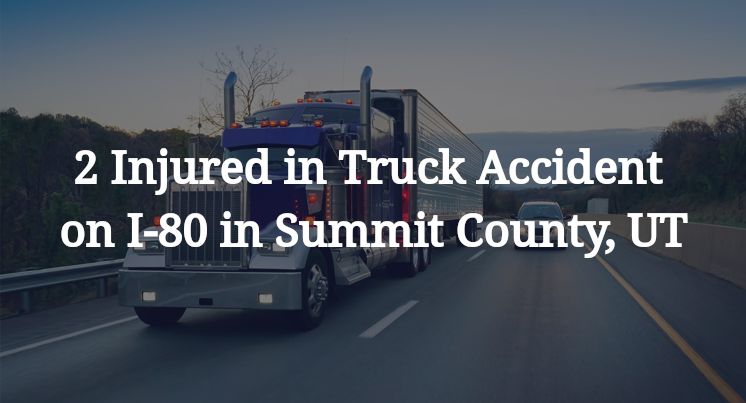2 Injured in Truck Accident on I-80 in Summit County, UT
Summit County, UT — June 27, 2025, two people were injured in a truck accident on eastbound Interstate 80 near mile marker 191.
Authorities said a Chrysler Pacifica crashed into the back end of the trailer being hauled by a Peterbilt semi-truck. The collision caused the SUV driver to lose control and the vehicle to veer off the right side of the road and roll over after hitting an embankment.

The Chrysler driver and a passenger, whose names have not been made public yet, suffered serious injuries in the crash, according to authorities. Both were hospitalized after being extricated from the wrecked vehicle.
The truck driver was not injured, authorities said.
Authorities have not released any additional information about the Summit County crash at this time. The accident is still under investigation.
Commentary
When people hear that a smaller vehicle hit the back of an 18-wheeler, they may assume it’s an open-and-shut case because maybe the SUV driver just wasn’t paying attention. But that’s far too simple a story, and it skips over some critical questions that still haven’t been answered here.
We don’t yet know if the truck was moving slowly, stopped in traffic or even improperly positioned on the roadway at the time of the crash. Depending on those facts, the legal questions change entirely. For instance, if the truck was going unusually slow in a high-speed lane without hazard lights, that would raise serious concerns. Likewise, if the SUV driver was suddenly confronted with a slow-moving or stopped trailer in a place they didn’t expect, that could mean the truck driver didn’t give approaching traffic enough warning or room to avoid a crash.
Another key detail is visibility. Did the back of the trailer have functioning lights and reflectors? Were they clean and visible in daylight conditions? In past cases I’ve handled, trailers have been hit simply because they blended into the background, especially when visibility aids were dirty, missing or malfunctioning.
Of course, we’re still waiting for those facts to come out. But that’s exactly why it’s so important to gather evidence from the truck itself. That includes pulling black box data to determine the truck’s speed and braking behavior, checking the driver’s cell phone records and reviewing any in-cab or rear-facing cameras that may show what really happened. Without those kinds of objective facts, it’s just guesswork.
Another layer of scrutiny goes to the company that put this driver on the road. Did they train him properly? Do they have policies for how their drivers operate in mountainous terrain like parts of I-80? I’ve seen too many cases where trucking companies treat mountainous areas like flatland highways, failing to prepare their drivers for the unique risks those roads present. That kind of neglect doesn’t always show up on a police report, but it can be decisive in court.
Key Takeaways:
- It’s still unclear whether the truck was stopped, slow-moving or otherwise created a hazard before impact.
- Trailer visibility, including lighting and reflectors, is a critical but often overlooked factor in rear-end collisions.
- Black box data, dash cams and cell phone records can help clarify whether the truck’s actions contributed to the crash.
- Trucking companies must be scrutinized for their training, oversight and route planning decisions.
- A thorough investigation is essential to determine who, if anyone, failed to prevent this wreck.

“These are essential reads for anyone dealing with the aftermath of a truck wreck”– Attorney Cory Carlson